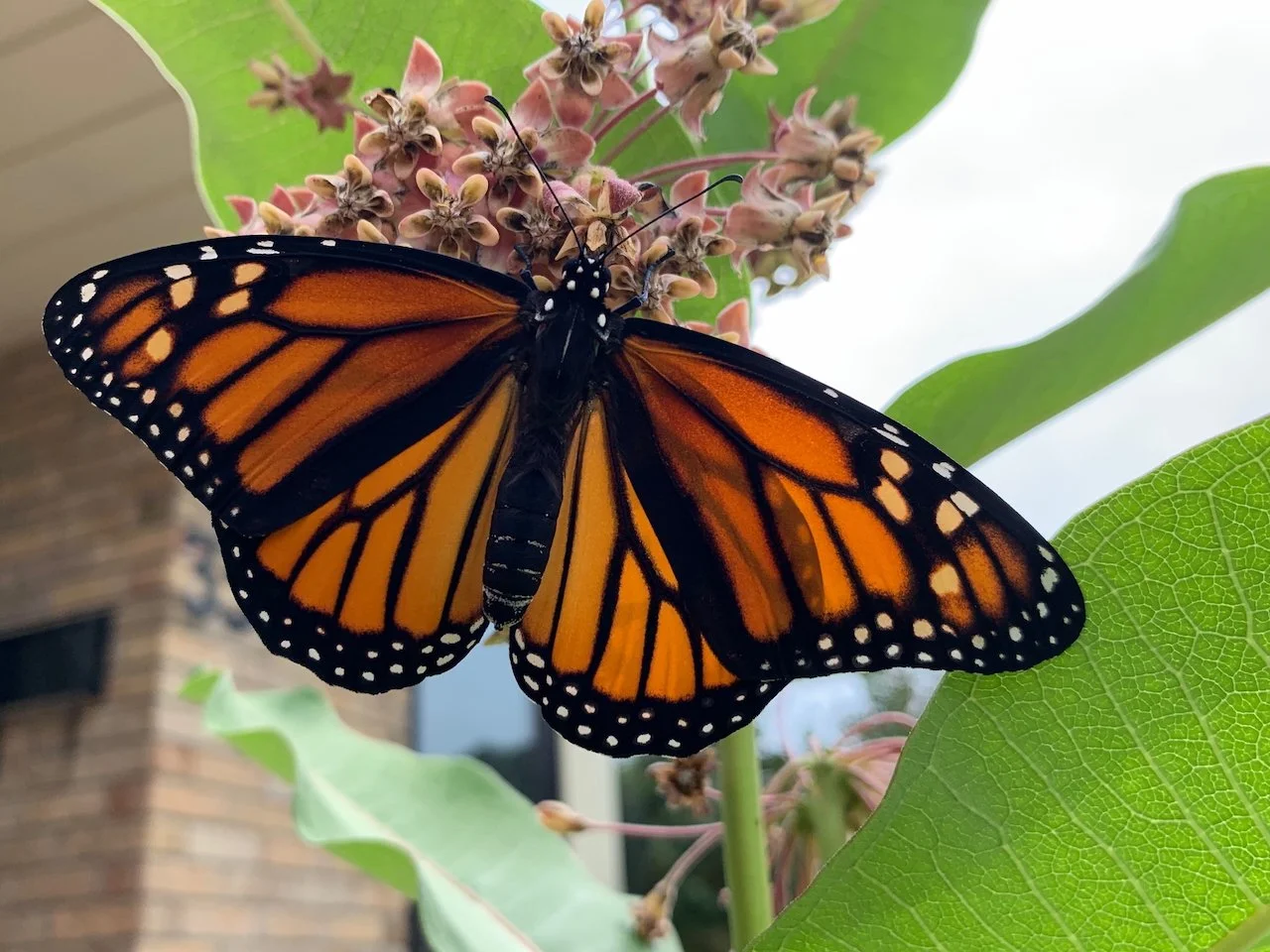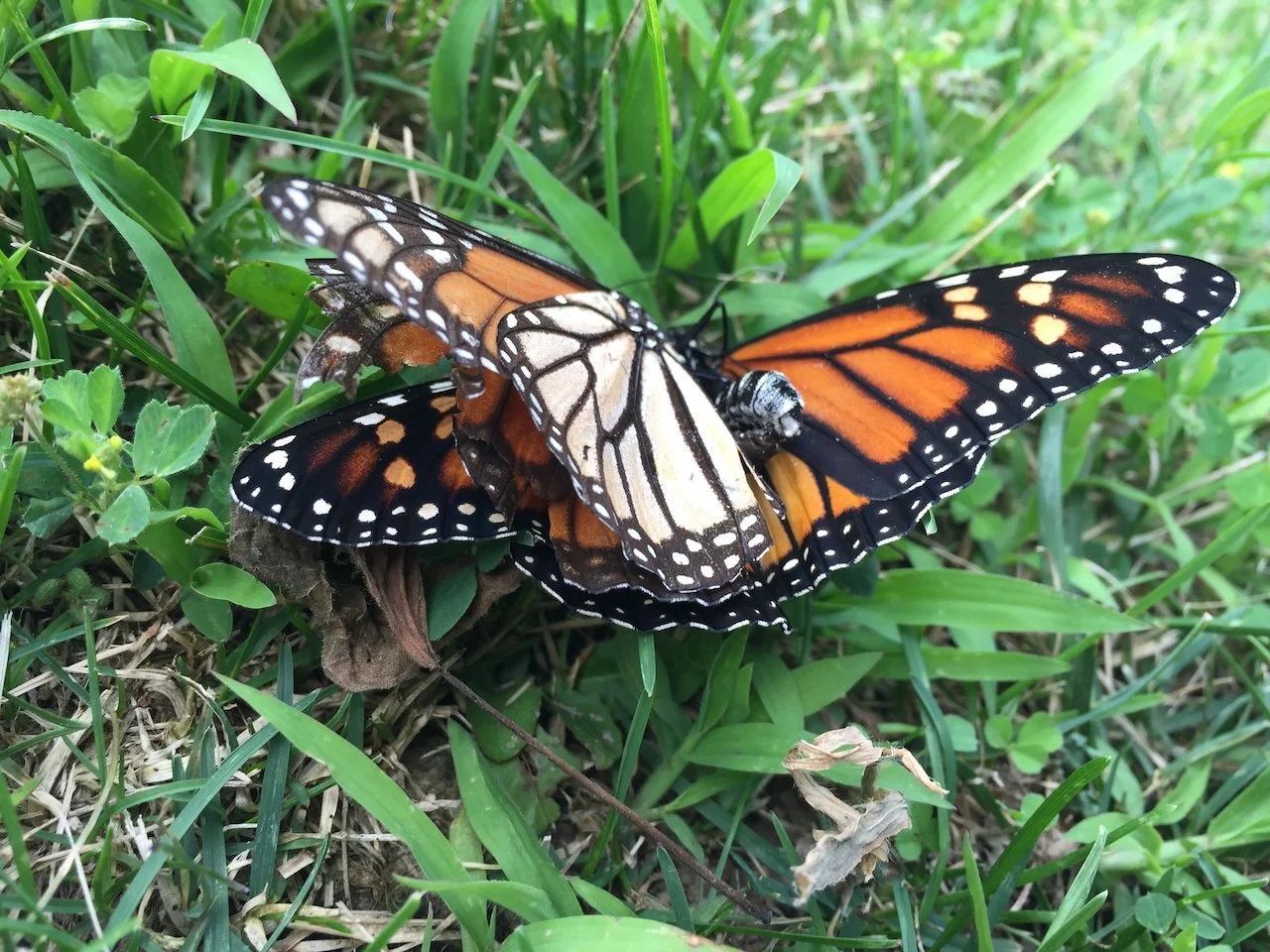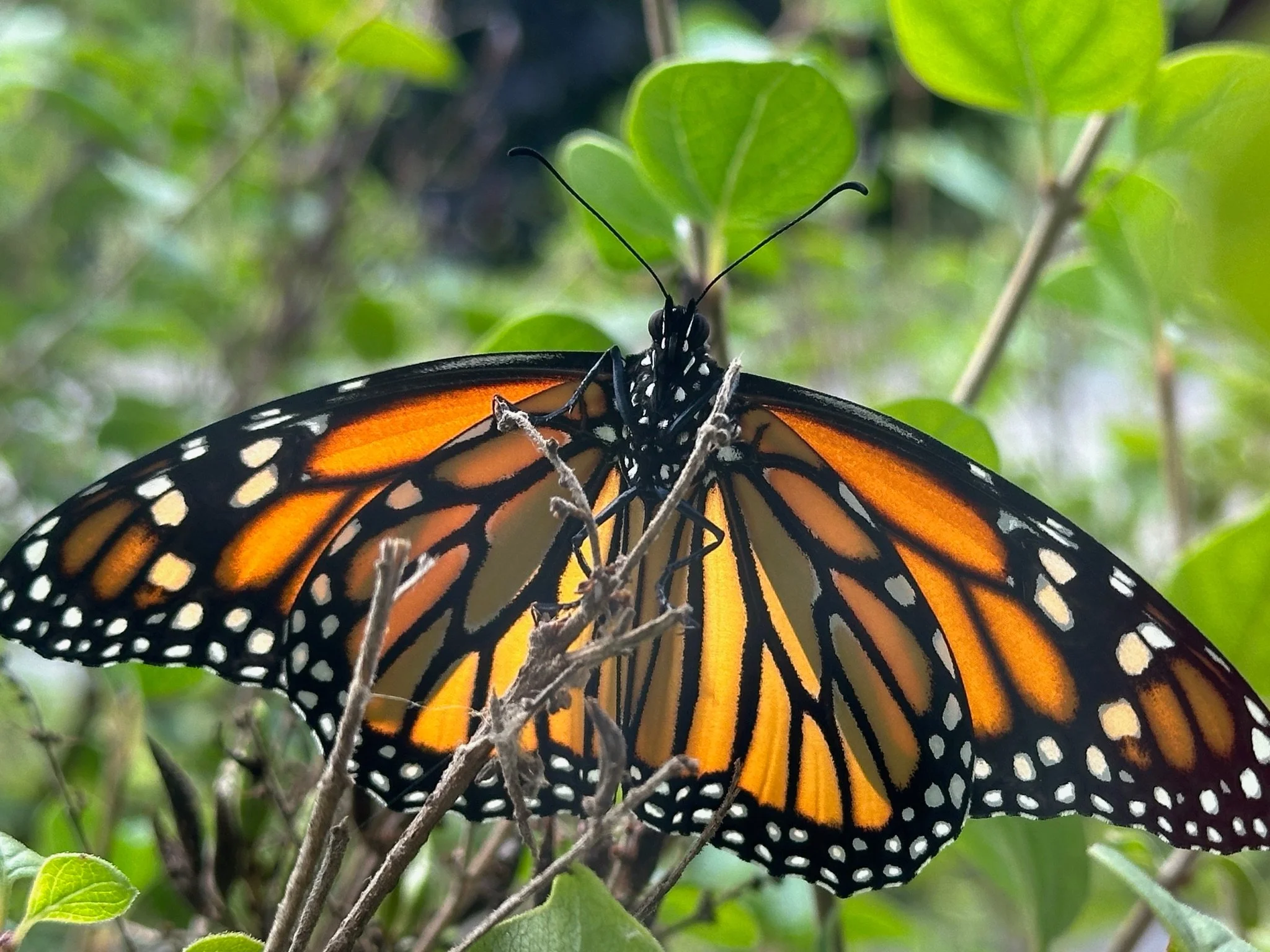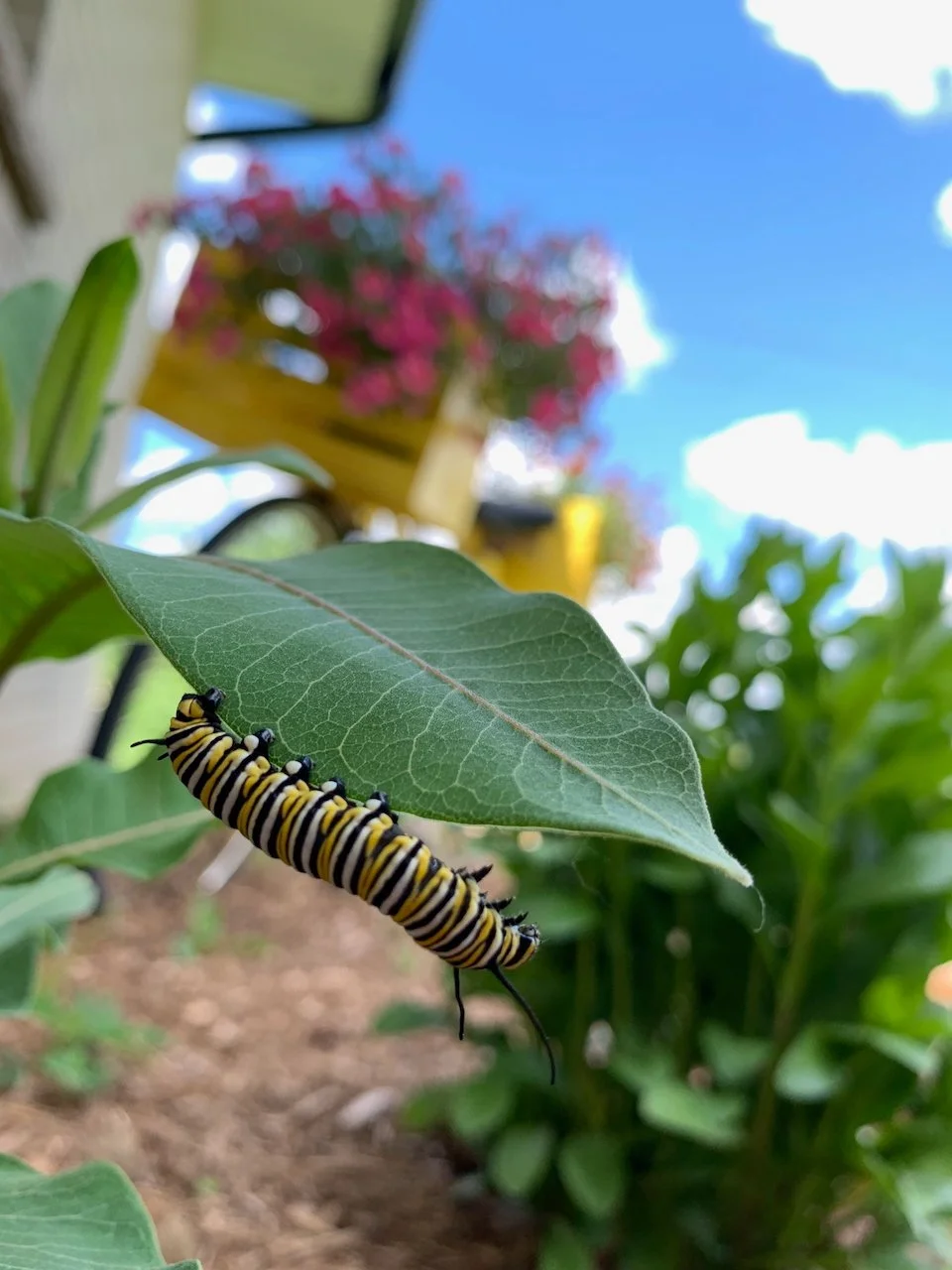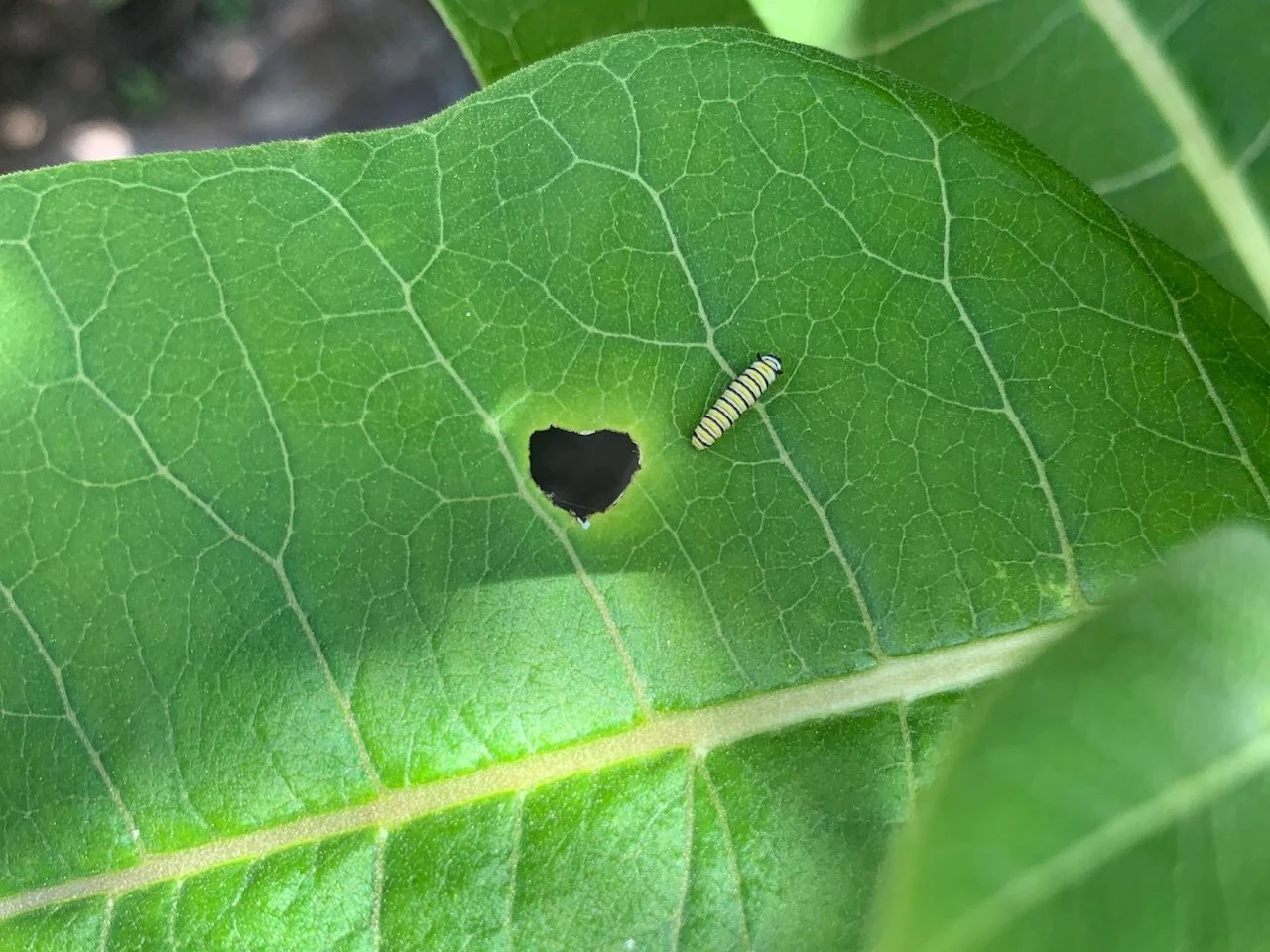Monarch Butterfly
Monarch Butterflies: Sky-Bound Royalty of North America
Each autumn, a seemingly fragile insect embarks on one of the most epic migrations on Earth. The monarch butterfly (Danaus plexippus) defies expectations, traveling thousands of kilometres and spanning multiple generations. All without a GPS or return ticket! But their journey isn’t just remarkable; it’s vital. And you, dear gardener, can play a role in their success.
Epic Travellers Across Time and Space
Monarchs migrate up to 4,500 km from Canada to central Mexico, a journey their wings weren't built for, but their genes were. What’s more astounding is that the butterflies fluttering through Ontario in summer aren’t the same ones that left Mexico. They’re the great-grandchildren of the original voyagers, none of whom have made the trip before.
During migration, monarchs can travel as much as 100 miles a day, fuelled by the nutrients they packed on as caterpillars, transforming the humble milkweed leaf into life-sustaining rocket fuel.
A royal beginning. Monarch butterflies in a moment of courtship, the first step in a multi-generational journey.
Nature’s Built-In Compass
With no maps or mentors, monarchs navigate using a time-compensated sun compass, a stunning internal mechanism that synchronizes sunlight and circadian rhythm to steer them south. Year after year, they return to the same oyamel fir trees in Mexico that sheltered their ancestors.
Built-in Defences and Bold Warning Signs
Their orange-and-black coloration isn’t just striking - it’s a warning. Monarchs, like their caterpillars, are toxic thanks to their exclusive diet of milkweed, which contains cardiac glycosides. These toxins deter predators and fortify the monarch's position in nature as “beautiful but bitter.”
Genetic Marvels in Motion
Monarchs were the first butterflies to have their genome sequenced, revealing genes linked to their migration, internal clocks, and even specialized microRNAs that are active only in migratory generations.
Taste with Their Toes
Monarchs aren’t just graceful gliders, they’re sensory powerhouses. They smell with their antennae and taste with the hairs on their feet, which help them detect suitable milkweed and nectar sources.
Native Plants for a Royal Feast
If you want to support monarchs in your Ontario garden, plant native milkweeds to nourish their caterpillars, and include fall-blooming, nectar-rich flowers to fuel the adults on their long journey south.
Host Plants: Milkweed is Monarch Life Support
Monarchs rely exclusively on native milkweed species as host plants for their young. The adult female lays tiny eggs, each one coated with a sticky substance that helps anchor it to the underside of milkweed leaves.
However, eggs can also be found on flowers or even seedpods. This might happen when a milkweed plant is already crowded with eggs or caterpillars, prompting the female to choose less conventional spots to avoid competition or even cannibalism (yes, monarch caterpillars sometimes eat eggs!). Or it may simply be due to time pressure: a female nearing the end of her life or carrying many eggs might prioritize speed over precision, laying eggs wherever she can.








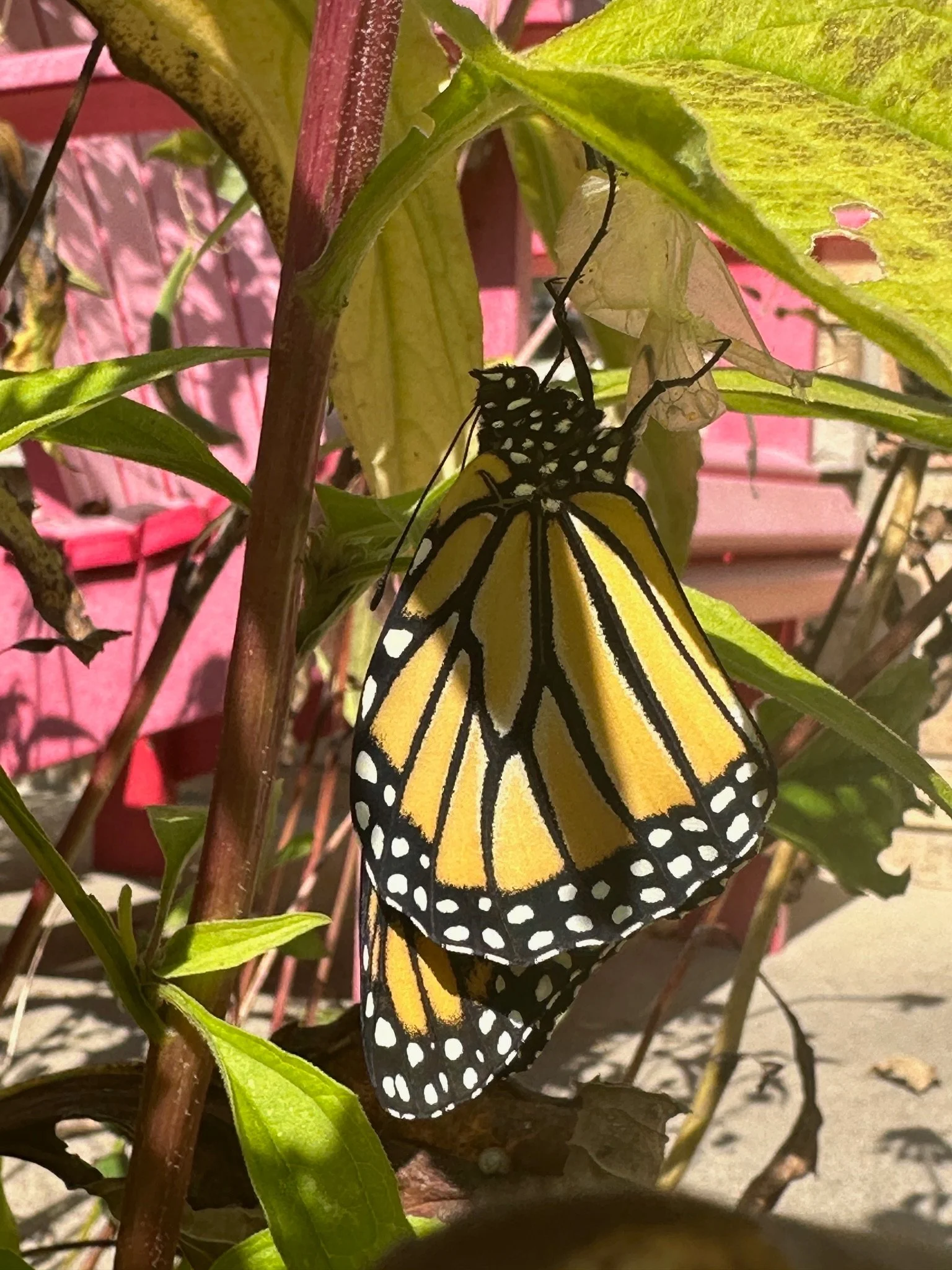
Milkweed leaves are rich in cardiac glycosides, toxins that make them unpalatable to most animals, but not to monarch caterpillars. After just a few days, the egg hatches, and the hungry larva begins feeding on the very leaf it was born on, its first bite in a remarkable journey.
Most monarchs live just 2–6 weeks, fluttering through their brief lives like petals on the wind. But once a year, a special migratory generation takes wing. These long-distance fliers are built to endure, living up to 8 months—long enough to complete their journey to Mexico, overwinter, and begin the next leg of the northward return.
Host Plants for the Monarch in Ontario are:
Common Milkweed (Asclepias syriaca)
Swamp Milkweed (A. incarnata)
Poke Milkweed (A. exaltata)
Nectar Plants for Migrants
| Plant | Bloom Time | Notes |
|---|---|---|
| New England Aster | Late summer–fall | Purple magnet for monarchs |
| Meadow Blazing Star | Mid–late summer | Dubbed the “monarch magnet” |
| Joe-Pye Weed | Midsummer–early fall | Towering, with rich nectar |
| Showy Goldenrod | Late summer–fall | Less aggressive than typical goldenrod |
| Ironweed | Late summer | Deep purple butterflies can’t resist |
| Aromatic Aster | Fall | Crucial late-season bloom |
Garden Tips for Monarch Magic
Plant in swaths: Bigger colour blocks attract more butterflies.
Go all-season: A variety of bloom times keeps nectar flowing from midsummer to fall.
Avoid pesticides, especially neonicotinoids.
Let it be a bit wild—those untidy corners are perfect for pollinators.
Monarch butterflies may weigh less than a paperclip, but their journey is monumental. By adding just a few native plants to your space, you can be part of one of nature’s greatest comeback stories. The flight of these winged royals isn’t guaranteed, but with your help, it can continue to grace our skies.
(Photo taken in our garden: Proof that even caterpillars wear their hearts on their leaves)
Fun Facts for Budding Naturalists
🍼 Milkweed Munchies Monarch caterpillars eat only one thing: milkweed! It’s their breakfast, lunch, and dinner and it makes them taste terrible to predators. Talk about a superpower snack!
🎨 Warning Colours Their bright orange wings with bold black lines aren’t just pretty, they’re a big “Do Not Eat” sign to birds. Monarchs are basically flying caution tape.
🧳 Born to Travel Some monarchs fly all the way from Canada to Mexico - over 4,000 km! That’s like walking from Ontario to Cancun in flip-flops. And the ones that come back? They’re the great-grandkids of the ones that left!
🥚 Sticky Starts A monarch mom lays her eggs on the underside of milkweed leaves and glues them down with a sticky substance. When the caterpillar hatches, its first meal is the very leaf it was born on. Yum?
🦋 Butterfly Builders Before becoming butterflies, monarch caterpillars spin a silky button and hang upside down in a “J” shape. Then - poof! - they transform into a jade-green chrysalis with shiny gold dots. Nature’s jewelry box!
🚀 Super Generation Most monarchs live just a few weeks, but the migratory “super generation” can live up to 8 months, long enough to fly south, overwinter in Mexico, and start the journey back.
🌟 Curious minds, come play! Ready to stretch your wings beyond the facts? Fly over to Sprouting Curiosity where you can zigzag through the Monarch Maze or fold your own Monarch Cootie Catcher. It’s learning disguised as play—and monarch-approved!

